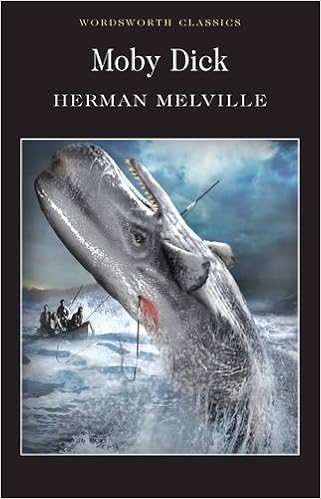How to Read “Moby Dick” by Herman Melville | A Guide for Beginners

Few American novels put off the general reader like Herman Melville’s Moby Dick. And the general reader isn’t entirely wrong to be put off.
Moby Dick is a genuinely strange work of art. For a book published in 1851, it’s more modernist text than 19th-century story, and might actually qualify as the first existentialist novel, if you take the White Whale to be the embodiment of a meaningless and hostile universe. Moby Dick is dense and it is difficult.
But it’s not as dense or as difficult as its reputation. It’s a pretty good sea-faring yarn. And it is a FUNNY book, at least until Ahab stomps onto the deck of the Pequod and sucks all the humor out of Ishmael and Queequeg, and the voyage in general, with his doomed, megalomaniac pursuit of revenge.
Now, there is some heavy going in Moby Dick and the first-time reader might decide to conserve his or her resources by “skimming” selected chapters. Father Mapple is a famous character, but Chapter 8 (“The Pulpit”) and Chapter 9 (“The Sermon”) could deter anyone from reading further for fear of discovering much much more of the same.
The many expository chapters, in which Melville discourses at length on every possible topic related to whales and whaling, also pose a problem for those picking up the novel for the first time.
To skip these chapters entirely would be to abstain from many of Moby Dick’s pleasures, particularly since Ishmael’s jaunty comic voice adds an agreeable tone of parody to these chapters.
At the same, there are a lot of them, and Melville is not always brief. So new readers would do well to pick and choose among chapters as they make their way through the book. For example, Chapter 32 (“Cetology”) and Chapter 42 (“The Whiteness of the Whale”) in their concentration and length are prime candidates for reading at a later date.
Which is not to say you should never read them. One of the great advantages of Moby Dick is that first-timers will do little violence to their understanding of the book’s story if they don’t read it straight through. Many of the chapters can stand on their own, inviting you to dip into the book where and as the mood possesses you. It also allows you to assemble your understanding of Moby Dick piece by piece, as if it were a 500-page jigsaw puzzle, rather than make a grimly determined march from the first page through to the last.
Finally, a copy of Moby Dick that includes reference materials is a big help. The Norton Critical Edition of Moby Dick includes maps, a glossary of nautical terms, and explanations of whaling and whalecraft with illustrations, all of which make Herman Melville’s book easier and more enjoyable to read.
Moby Dick is a genuinely strange work of art. For a book published in 1851, it’s more modernist text than 19th-century story, and might actually qualify as the first existentialist novel, if you take the White Whale to be the embodiment of a meaningless and hostile universe. Moby Dick is dense and it is difficult.
But it’s not as dense or as difficult as its reputation. It’s a pretty good sea-faring yarn. And it is a FUNNY book, at least until Ahab stomps onto the deck of the Pequod and sucks all the humor out of Ishmael and Queequeg, and the voyage in general, with his doomed, megalomaniac pursuit of revenge.
Now, there is some heavy going in Moby Dick and the first-time reader might decide to conserve his or her resources by “skimming” selected chapters. Father Mapple is a famous character, but Chapter 8 (“The Pulpit”) and Chapter 9 (“The Sermon”) could deter anyone from reading further for fear of discovering much much more of the same.
The many expository chapters, in which Melville discourses at length on every possible topic related to whales and whaling, also pose a problem for those picking up the novel for the first time.
To skip these chapters entirely would be to abstain from many of Moby Dick’s pleasures, particularly since Ishmael’s jaunty comic voice adds an agreeable tone of parody to these chapters.
At the same, there are a lot of them, and Melville is not always brief. So new readers would do well to pick and choose among chapters as they make their way through the book. For example, Chapter 32 (“Cetology”) and Chapter 42 (“The Whiteness of the Whale”) in their concentration and length are prime candidates for reading at a later date.
Which is not to say you should never read them. One of the great advantages of Moby Dick is that first-timers will do little violence to their understanding of the book’s story if they don’t read it straight through. Many of the chapters can stand on their own, inviting you to dip into the book where and as the mood possesses you. It also allows you to assemble your understanding of Moby Dick piece by piece, as if it were a 500-page jigsaw puzzle, rather than make a grimly determined march from the first page through to the last.
Finally, a copy of Moby Dick that includes reference materials is a big help. The Norton Critical Edition of Moby Dick includes maps, a glossary of nautical terms, and explanations of whaling and whalecraft with illustrations, all of which make Herman Melville’s book easier and more enjoyable to read.
No comments:
Post a Comment